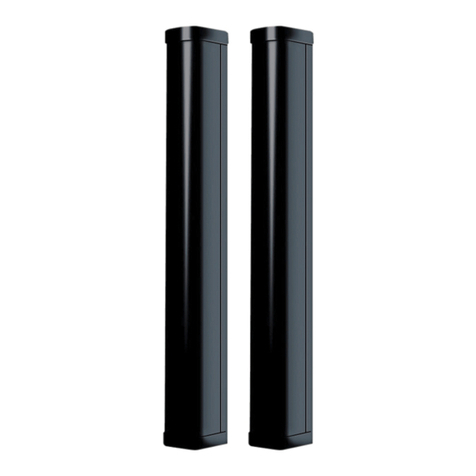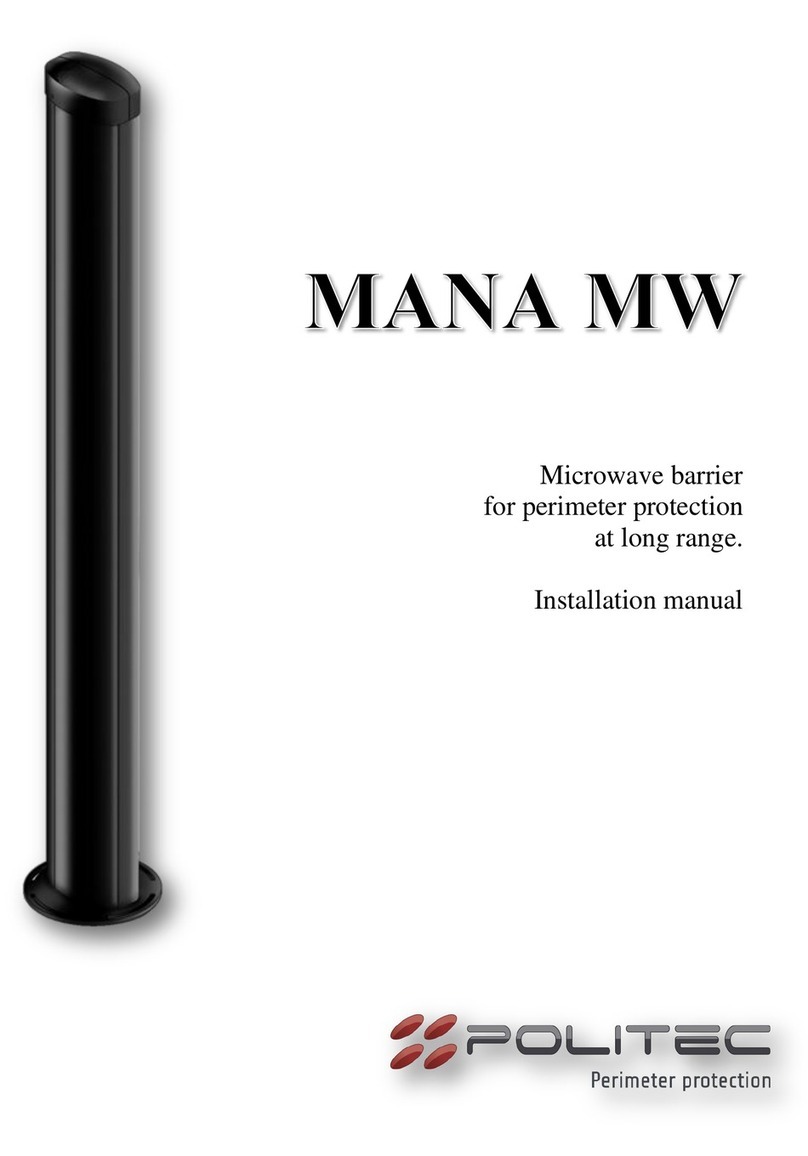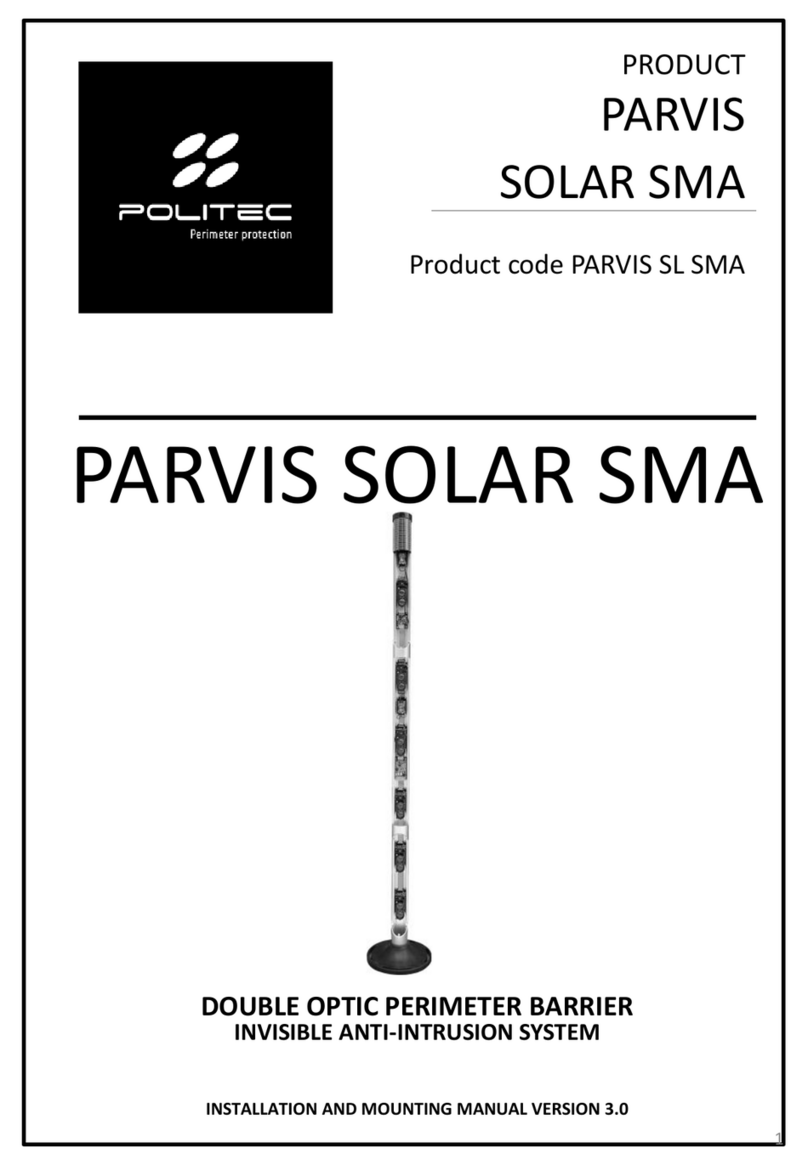Index
Main component list Pag. 5
Installation reccomendations Pag. 6
Mounting the bracket Pag. 7
Installation example Pag. 8
Application example Pag. 9
Alignment Pag. 10
Vertical alignment Pag. 10
Horizontal alignment Pag. 10
Terminal connections for and to the P.C.B Pag. 11
Synchronism cabling Pag. 12
Set-up using the test points Pag. 13
Factory setting for Tx and Rx sequence identification Pag. 16
Set up examples Pag. 17
P.C.B setting and programming Pag. 18
Functional description of the Led's Pag. 19
Description of jumper setting and characteristics Pag. 20
Technical specifications Pag. 22
Installation reccomendations
Verify that the beam tower is fully watertight once the cover and end caps have
been correctly filled at the end of the installation.
Use the cable glands supplied on the tower for all cabling must pass through the
lower end cap using the cable glands supplied.
Avoid any type of obstruction between the transmitter and receiver.
Avoid installing the receivers beams in a position where direct sunlight, at the same
angle as the receivers beams, can enter directly into optics especially at sunset and
sunrise
Do not install multiple beams where the transmitter beam can interfere with other
receiver beams. It is always better place either transmitter or receivers back to
back.
Do not use switched power supplies which can induce noise on the power supply
voltage which can in turn be amplified by the optical sync electronics creating
unwanted problems.
































